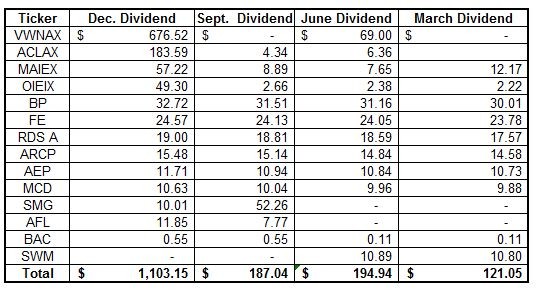Dive Into Dividend Income Funds
Post on: 24 Апрель, 2015 No Comment

Start Your Search For A Dividend Income Fund Here
You can opt-out at any time.
Please refer to our privacy policy for contact information.
Looking for dividend income, but you don’t really want to pick and choose individual stocks? It might be time to dive in and take a good look at dividend income funds. Dividend income funds do the work for you, owning a diversified selection of dividend paying stocks, and collecting the dividends and paying them out to you typically on a monthly or quarterly basis.
Before you buy a dividend income fund, you can determine the amount of income you would receive by looking at the fund’s distribution rate. This is similar to looking at a dividend paying stock, where you can determine the amount of income you would receive by looking at the stock’s dividend yield. Although similar, distribution rates and dividend yields are not the same, and it is important to understand the difference.
Distribution Rate Of A Dividend Income Fund
Before buying a dividend income fund learn about the fund’s distribution rate policy. Some funds pay out just the dividends collected. This would make the fund’s distribution rate an equivalent calculation to the dividend yield on a stock.
Other funds have a policy that states they will pay a specific amount of income, which means there may be times where they will return principal as part of the distribution. The principal returned could be gain earned on the sale of an appreciated stock in the portfolio, or it could be that the fund was forced to liquidate a stock at a loss to fulfill its requirements under its distribution rate policy. There is nothing wrong with this type of distribution rate policy, but like any investment, you want to understand how it works before you buy it.
Closed End Dividend Income Funds
Many dividend income funds are closed end funds. Before choosing a closed end dividend income fund, make sure you understand the unique risks and benefits of closed end funds. They do not operate the way a typical open mutual fund operates.
Some closed end funds follow a dividend capture strategy, buying stocks just before their ex-dividend date. and selling them after they pay the dividend. Since most dividend paying stocks pay dividends quarterly, if the fund owned a static portfolio, it would capture four dividend payments a year. By rolling the portfolio based on the ex-dividend dates of various stocks, the fund is able to capture five dividend payments a year, rather than four. This strategy can result in a higher distribution rate. It can also result in capital losses or gains, since this type of dividend income fund is actively moving in and out of stocks.
You can also search for a closed end dividend income fund using CEFConnect.
Dividend Income Index Funds
Index funds are one of the most cost effective ways to invest. For a look at a few traditional dividend income funds that offer a low cost way to own dividend paying stocks, check out my dividend income index fund list. I think dividend index funds can be one of the most effective ways to get exposure to dividend paying stocks.
Consider Using Alternatives To A Dividend Income Fund
If you are looking for a dividend income fund because you want monthly retirement income. consider using something called a retirement income fund. Like a dividend income fund, these funds are designed to produce and pay out regular income. Instead of owning dividend paying stocks, these funds own a diversified portfolio of stocks and bonds which are managed to achieve a long term return that will allow the fund to pay out a set amount of income to you each month.














